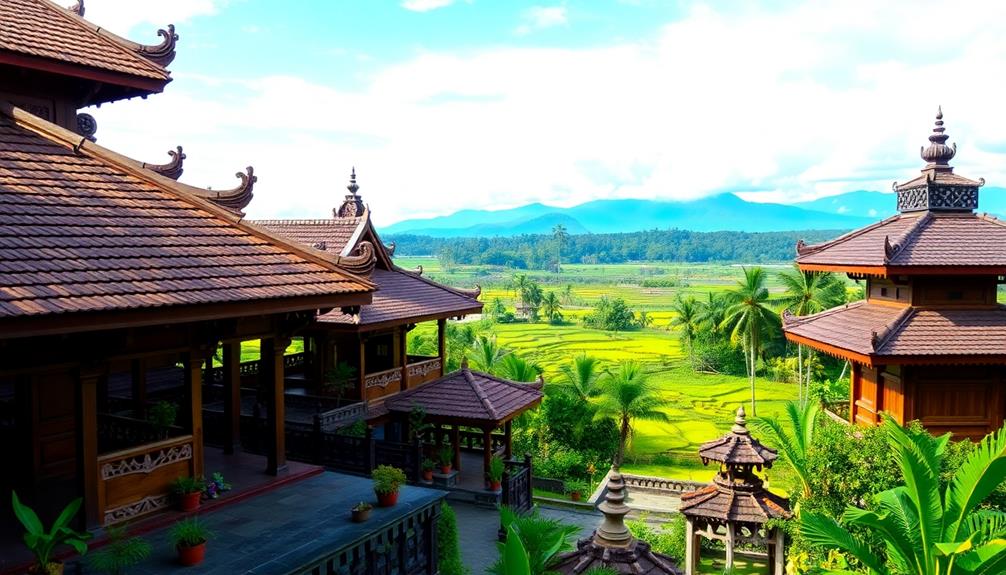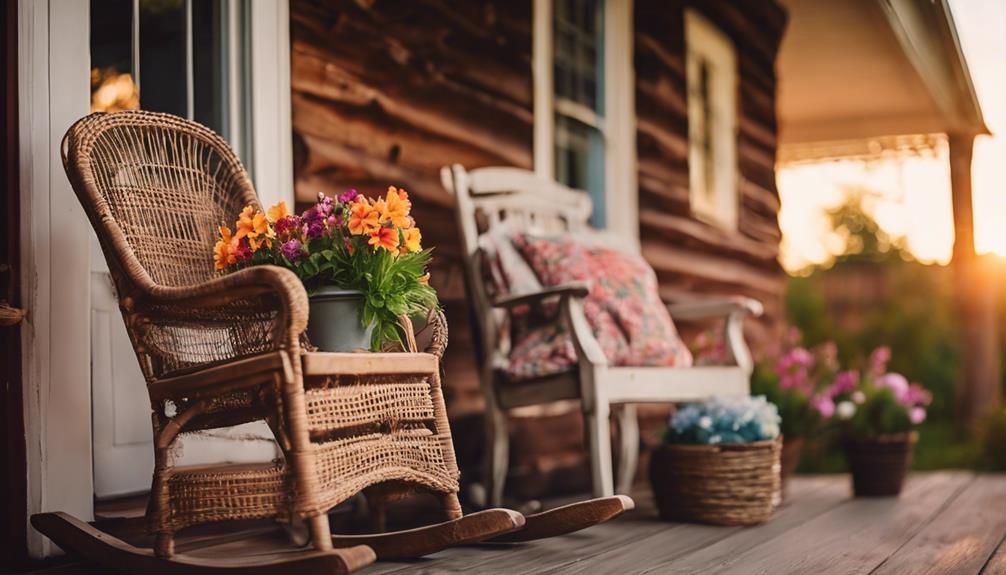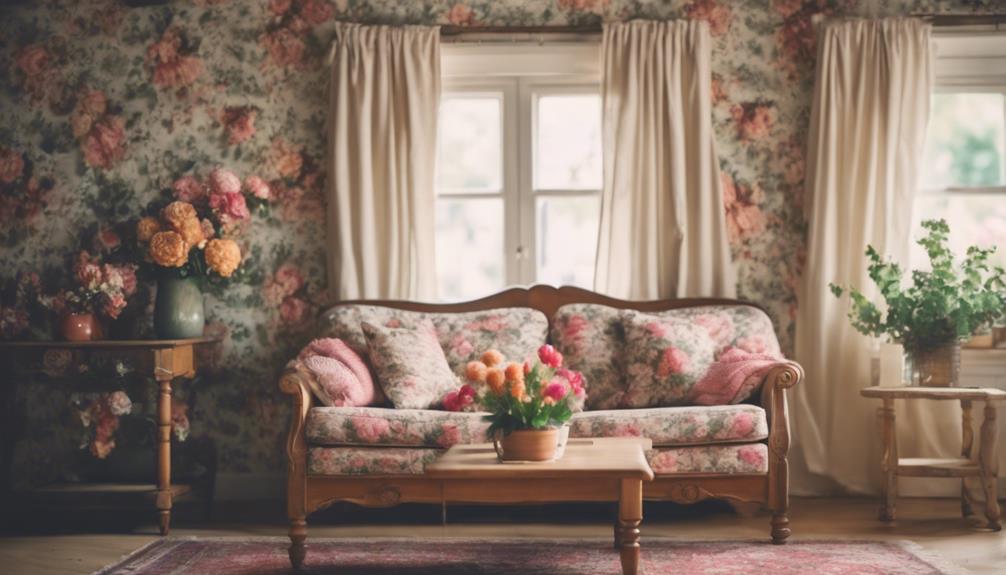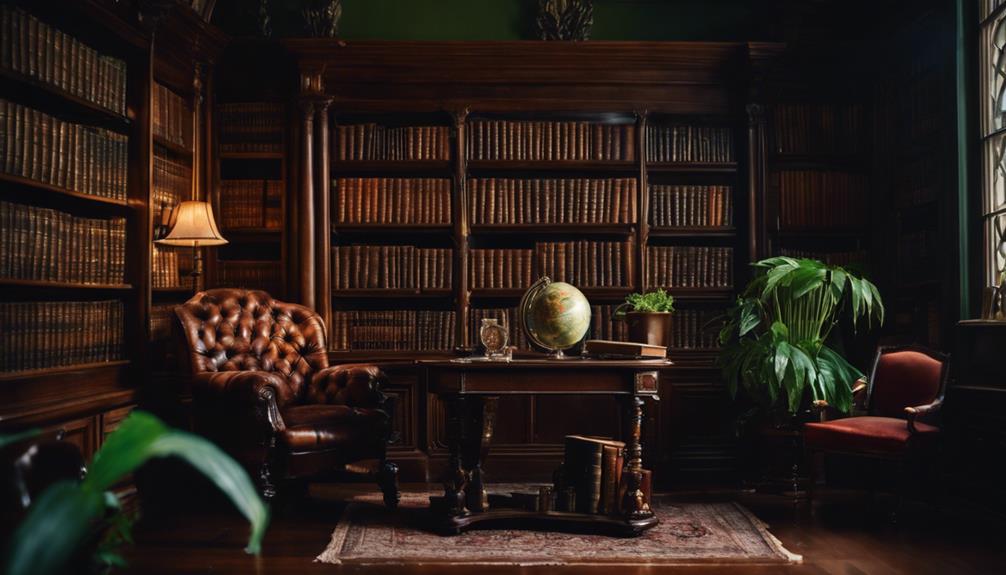You'll find a stunning variety of traditional houses to explore in Indonesia, each reflecting unique cultural identities. Visit the Rumah Gadang with its iconic buffalo-horn roof and intricate carvings. The Joglo house showcases Javanese craftsmanship and serves as a communal gathering space. Don't miss the Tongkonan, known for its boat-shaped roof and deep-rooted rituals. The Limas House and its pyramid-shaped roof are simply striking, while the Balinese House offers a harmonious indoor-outdoor experience. Finally, the Rumah Betang fosters community living among Dayak tribes. There's so much more to learn about these architectural marvels! Experience the rich diversity of Indonesian architecture and immerse yourself in the beauty of each unique style. Each house not only reflects the cultural identity of its people but also offers a glimpse into their way of life and traditions. For a truly immersive experience, take a closer look at the Balinese House and its harmonious blend of indoor-outdoor living, complemented by the intricate details of traditional Balinese interior design. The attention to detail and the deep connection to history and culture make these traditional houses a must-visit for anyone interested in Indonesian architecture. Explore the rich architectural heritage of Indonesia and dive into adventure as you wander through these traditional houses. Discover the stories behind each unique style and gain a deeper understanding of the cultural significance of these structures. With their intricate designs and deep-rooted traditions, these houses offer an immersive experience that will leave you marvelling at the beauty and diversity of Indonesian architecture.
Key Takeaways
- Explore Rumah Gadang in West Sumatra, famous for its buffalo horn-shaped roof and intricate wooden carvings reflecting Minangkabau culture.
- Visit the Joglo houses in Java, known for their large open halls and tiered roofs, showcasing remarkable Javanese craftsmanship.
- Discover Tongkonan in Toraja, characterized by its boat-shaped roof, symbolizing the soul's journey and representing family lineage.
- Experience the Limas House in Palembang, distinguished by its pyramid-shaped roof and communal gathering spaces, reflecting local traditions.
- Admire Balinese houses, structured as interconnected compounds that promote seamless indoor-outdoor living and showcase tropical aesthetics.
Rumah Gadang
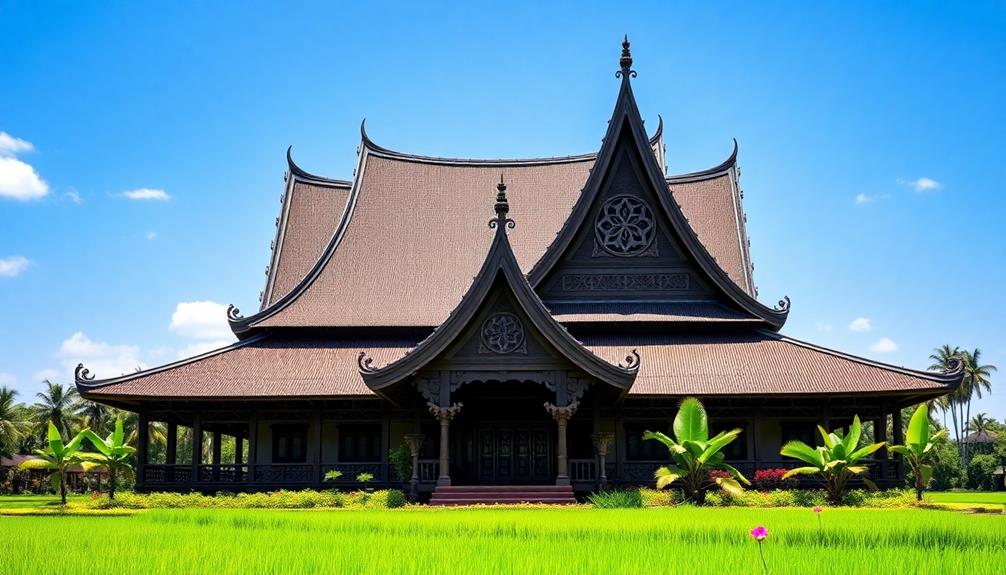
The Rumah Gadang, with its iconic curved roof resembling buffalo horns, stands as a proud symbol of the Minangkabau people's cultural identity in West Sumatra. This traditional architecture isn't just stunning; it embodies the values and social structure of the Minangkabau community.
Built on stilts, the Rumah Gadang offers flood protection and promotes airflow, essential for the humid tropical climate.
Traditional Indonesian housing showcases diverse architectural styles that reflect regional identity.
As you step inside, you'll notice the spacious interior designed for communal living and family gatherings, reflecting the matrilineal nature of their society. The layout and rooms encourage close family ties, showcasing the importance of unity among the Minangkabau people.
The exterior of the Rumah Gadang captivates with its intricate wooden carvings and vibrant painted designs. These artistic elements often depict natural motifs and folklore, conveying the rich cultural stories and values that define the Minangkabau identity.
Recognized as a UNESCO World Heritage site, the Rumah Gadang not only showcases architectural elegance but also highlights the community's dedication to preserving their heritage.
Visiting this remarkable structure allows you to truly appreciate the essence of Minangkabau culture.
Joglo

When you explore the Joglo, you'll notice its striking architectural features, like the large open hall and tiered roof that showcase Javanese craftsmanship.
This design not only reflects social status but also plays an essential role in community gatherings and cultural ceremonies.
The use of natural materials in its construction promotes sustainability, which is a key aspect of traditional Indonesian houses.
Understanding its significance helps you appreciate how this traditional style continues to influence modern Indonesian homes.
Architectural Features of Joglo
Joglo houses stand out with their striking architectural features that reflect both functionality and cultural significance. These traditional wooden houses are designed with a large central open space, perfect for family gatherings and community events.
The unique multi-tiered roof, often made from thatched alang-alang grass, not only adds visual appeal but also effectively channels rainwater away, which is essential in Java's tropical climate. Incorporating natural materials like wood and bamboo, the Joglo exemplifies Balinese design characteristics that promote a connection to nature.
The walls of a Joglo are typically constructed from woven bamboo or timber, showcasing intricate wooden carvings that tell Javanese cultural stories. These carvings aren't just decorative; they also symbolize the skill of the craftsmen and the cultural heritage of the region.
Additionally, the design of the Joglo indicates social status—more elaborate versions of these homes signify greater wealth and prestige within the community.
Another important aspect is the elevated foundations, which promote airflow and provide protection against flooding. This thoughtful design guarantees that the Joglo remains comfortable and functional, allowing you to appreciate the beauty of its architecture while enjoying the benefits it offers in a tropical environment.
Cultural Significance and Use
Within the rich tapestry of Javanese culture, the Joglo house stands as a powerful symbol of identity and social status. Its architectural style not only impresses but also reflects the family's wealth through intricate wooden carvings and design.
The Joglo serves essential functions in the community, emphasizing the significance of social interaction and family bonds. The use of handcrafted materials, similar to traditional Indonesian decorative pillows, enhances both the aesthetic and cultural value of the home, making it a true representation of heritage.
Additionally, the vibrant colors often found in Joglo houses create an inviting atmosphere, much like the vibrant artwork that celebrates Indonesian culture.
Here are three key aspects of its cultural significance:
- Community Gatherings: The large, open central hall invites family ceremonies and gatherings, reinforcing the communal spirit.
- Symbol of Status: The elaborate design and craftsmanship of a Joglo house indicate the owner's social standing, making it more than just a home.
- Cultural Narratives: The wooden carvings tell stories, showcasing the region's rich history and artistic tradition.
The roof's multi-tiered structure isn't merely aesthetic; it helps manage the tropical climate, demonstrating how functionality is intertwined with beauty.
Fundamentally, the Joglo house embodies the spirit of Javanese society, emphasizing community, cultural narratives, and pride in traditional houses.
Tongkonan
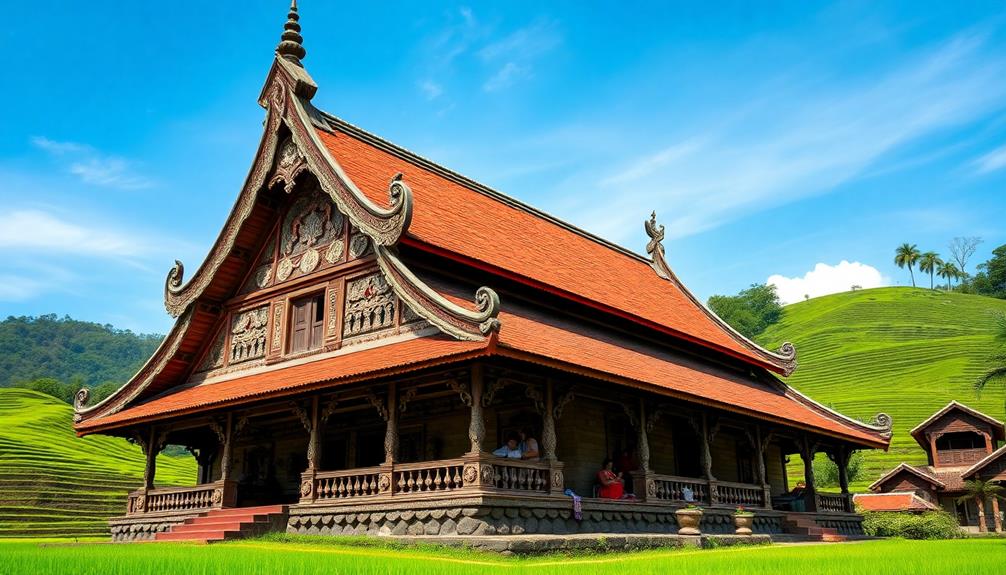
Have you ever seen a house that looks like it's been plucked straight from a dream? The Tongkonan, a traditional home of the Toraja people in Tana Toraja, Indonesia, certainly fits that description. With its striking boat-shaped roof, the Tongkonan symbolizes the journey of the soul to the afterlife.
These houses often feature bright colors and intricate carvings, much like the unique artistic expressions found in Indonesian decor masks, showcasing the Toraja's rich cultural heritage. You'll be captivated by the vibrant colors and intricate carvings that adorn these houses, often depicting ancestral and spiritual motifs that showcase the Toraja's rich cultural heritage.
Built on stilts, the Tongkonan not only protects the structure from flooding but also signifies the family's status in society. Each house is unique, representing the family lineage and social standing, making them even more special.
As you explore these remarkable homes, you'll notice how they serve as important ceremonial sites for various cultural rituals, such as weddings and funerals. This connection to ancestry and tradition is deeply embedded in the community's identity.
Visiting a Tongkonan is more than just seeing a house; it's an immersion into a vibrant culture that values family, tradition, and the spiritual journey of life.
Limas House

Elegance and tradition come together in the Limas House, a stunning architectural gem located in Palembang, South Sumatra. This traditional wooden house features a distinctive pyramid-shaped roof that not only elevates the structure but also enhances its aesthetic appeal.
The use of natural materials like wood and bamboo, as well as the integration of intricate carvings that symbolize prosperity and harmony, reflect the rich cultural heritage of the Palembang people and the essence of traditional Indonesian style home decor.
Visiting the Limas House, you'll discover its significance in the region through these key aspects:
- Architectural Design: Built on stilts, the Limas House cleverly avoids flooding, showcasing its adaptation to the local environment.
- Cultural Symbolism: The intricate carvings tell stories of prosperity and unity, connecting the house to the community's values.
- Communal Space: Traditionally, the Limas House serves as a gathering place for family celebrations, embodying hospitality and togetherness in Palembang society.
As you explore the Limas House, you'll appreciate how it represents not only a unique architectural style but also the enduring spirit of the Palembang culture.
Balinese House
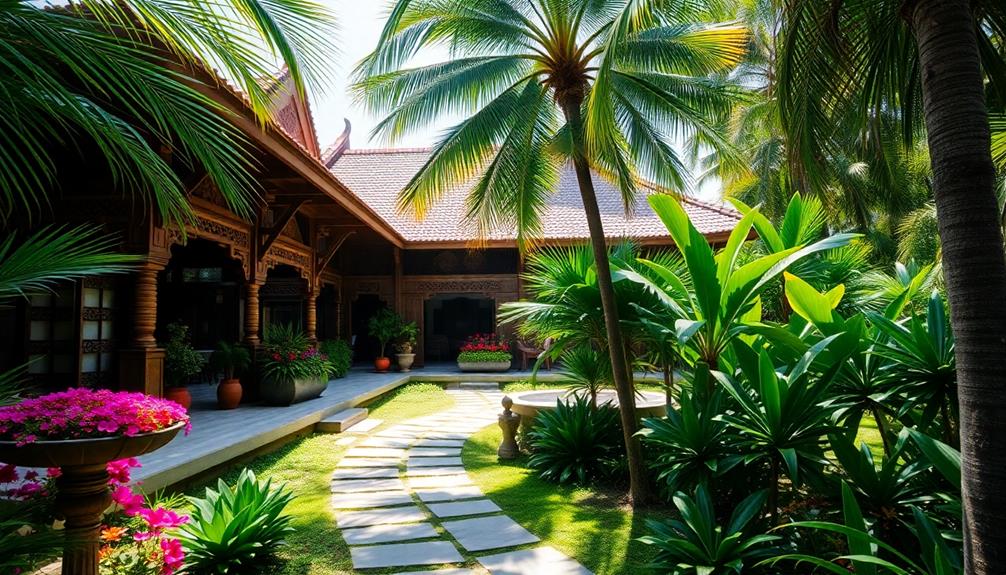
Nestled among lush gardens, the Balinese house embodies a harmonious blend of functionality and spirituality. These unique houses are structured as compounds with multiple interconnected buildings, each designated for specific activities like living, cooking, and spiritual practices.
The architectural design also emphasizes modern tropical aesthetics, ensuring a seamless flow between indoor and outdoor environments. You'll find that Balinese houses emphasize harmony with nature, often surrounded by vibrant gardens adorned with intricate wood carvings that reflect the island's rich cultural heritage.
A typical Balinese house includes a temple for family worship, showcasing the integral role spirituality plays in daily life. The design incorporates open spaces and excellent ventilation, promoting airflow and comfort in the tropical climate.
Constructed primarily from natural materials like wood and bamboo, these houses highlight craftsmanship that respects local resources and traditions.
As you explore a Balinese house, you'll appreciate how it's built to create a serene environment, inviting both nature and family life to coexist. The thoughtful arrangement and artistic details invite you to experience the essence of Balinese culture firsthand.
When you visit, you'll discover how these houses aren't just homes; they're living representations of a rich cultural legacy.
Rumah Betang
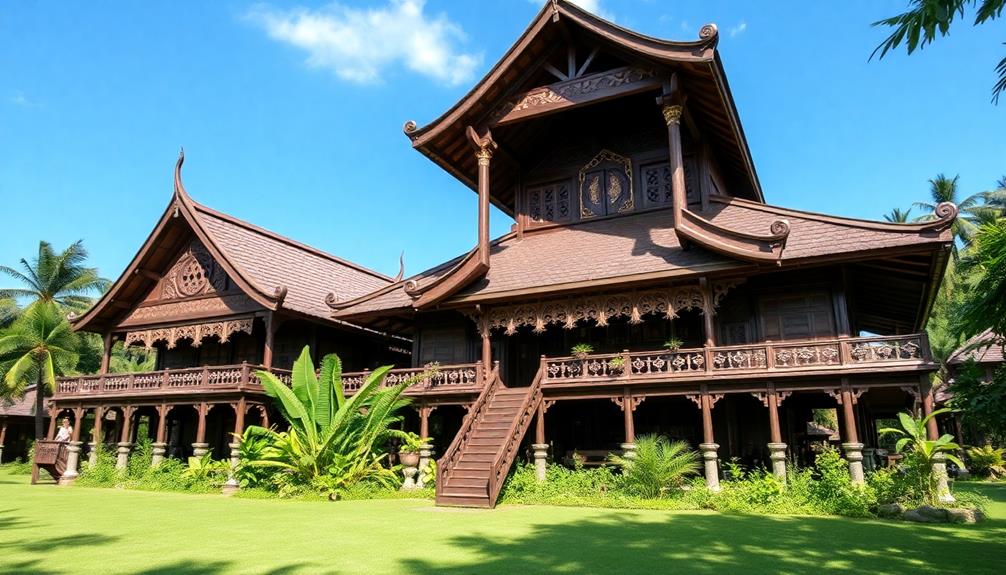
When you step into a Rumah Betang, you'll immediately feel the sense of community it fosters among the Dayak tribes.
This traditional longhouse not only serves as a home but also as a vibrant space for social gatherings, reflecting the cultural heritage of its people.
The intricate artistry found in Indonesian decor masks often complements the home's aesthetic, showcasing the rich traditions of the region.
With its intricate designs and communal layout, Rumah Betang truly embodies the essence of togetherness and tradition.
Communal Living Spaces
Emphasizing communal living, the Rumah Betang serves as a remarkable longhouse for the Dayak tribes in Central Kalimantan. This traditional house is designed to accommodate multiple families under one roof, fostering a sense of social interdependence.
The architectural layout, with a central hallway connecting various rooms, encourages interaction and shared activities among residents. The vibrant colors and traditional motifs often found in local decorations can also be seen in the intricate designs of the Rumah Betang, adding to its cultural significance.
Additionally, the use of natural materials in its construction reflects the same eco-friendly aesthetics celebrated in Indonesian wedding decor, such as bamboo and local floral arrangements traditional motifs and patterns.
Here are three key aspects that highlight the significance of Rumah Betang:
- Family Unity: The structure promotes close-knit relationships, enabling families to support one another in daily life.
- Sustainable Practices: Built using natural materials like wood and bamboo, the Rumah Betang reflects the Dayak's deep connection to their environment and commitment to sustainability.
- Cultural Expression: The longhouse features symbolic carvings that narrate the tribe's heritage, enriching the communal living experience with stories and traditions.
In essence, the Rumah Betang is more than just a house; it embodies the spirit of community, showcasing how traditional houses can enhance social bonds and cultural identity.
Cultural Heritage Significance
The Rumah Betang stands as a symbol to the rich cultural heritage of the Dayak tribes in Central Kalimantan, showcasing their values of unity and community. This traditional longhouse, often referred to as a Rumah adat, reflects the cultural diversity found in Indonesia. Built on stilts, it protects residents from flooding while providing a safe haven from wildlife, demonstrating the Dayak's architectural ingenuity.
Additionally, the intricate designs of such structures often echo the artistic traditions found in the region, similar to the importance of Indonesian decor masks that celebrate local myths and folklore.
Inside, you'll find a central hallway leading to multiple rooms, emphasizing the importance of social interaction. This layout transforms the Rumah Betang into a gathering place for families and friends, reinforcing the collective spirit of the Dayak people. The elaborate carvings and woven bamboo walls not only showcase artistic expression but also preserve ancestral heritage.
Significantly, the Rumah Betang serves as a venue for traditional ceremonies, ensuring that customs are passed down through generations. While it stands apart from other traditional houses, like the Batak House, it shares a common thread of cultural significance.
Panggung House

One of the most striking examples of traditional Indonesian architecture is the Panggung House, an elevated wooden structure found primarily in Riau and Jambi.
This house is ingeniously designed to protect against flooding and wildlife, showcasing the region's traditional architectural practices. Its steeply pitched roof not only enhances the house's aesthetic appeal but also guarantees ample ventilation and shade, vital for Indonesia's tropical climate.
Inside, you'll discover a large open space that encourages family activities and fosters communal interactions, embodying the spirit of togetherness.
The Panggung House is often adorned with colorful motifs and woven bamboo walls, reflecting the rich cultural identity of the Lampung people.
Here are three key features that make the Panggung House unique:
- Elevated Design: Built on stilts, it elevates the structure above potential floodwaters.
- Ventilation and Shade: The steeply pitched roof allows for better airflow while providing shade from the sun.
- Cultural Reflection: Its decorative elements highlight the artistic expressions of the local community.
Visiting a Panggung House offers a glimpse into Indonesia's harmonious relationship with nature and its architectural heritage.
Frequently Asked Questions
What Is the Traditional House in Indonesia?
When you think of traditional houses in Indonesia, you'll find unique structures like Rumah Gadang and Joglo. Each reflects distinct cultural heritage, featuring elevated designs and intricate craftsmanship, showcasing the country's rich architectural diversity.
What Type of Houses Do People Live in In Indonesia?
Imagine living in a house that tells a story. In Indonesia, you'll find traditional homes like the Rumah Gadang and Joglo, each crafted with unique designs reflecting the rich cultural heritage of its people.
What Are the Traditional Houses in Jakarta?
In Jakarta, you'll find traditional houses like the Betawi house, featuring vibrant colors and intricate carvings, and the Kebaya House, which blends Betawi and Chinese styles, perfect for social gatherings and showcasing cultural heritage.
What Are the Traditional Homes of the Minangkabau?
The traditional homes of the Minangkabau, like majestic buffaloes, stand proud with their curved roofs. These Rumah Gadang, built on stilts, embody family unity and cultural heritage, adorned with intricate carvings that tell vibrant stories.
Conclusion
Exploring Indonesia's iconic traditional houses is like stepping into a vivid tapestry of culture and history. Each unique structure, from the majestic Rumah Gadang to the intricate Joglo, tells a story of the people who built them. So, why not commence on this architectural journey and immerse yourself in the vibrant traditions that shape Indonesia? You'll not only gain a deeper appreciation for these stunning homes but also for the rich heritage they represent.
